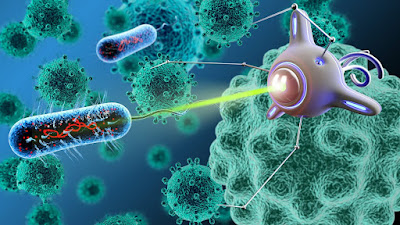Nanomedicines Is The Use Of Nanotechnology To Achieve Healthcare Innovation
 |
| Nanomedicines |
The lack of a well-organized
regulatory framework is expected to stymie the growth of the nanomedicine
economy. Currently, there are no specific testing requirements for
nanomedicine. However, the FDA, CDER, and other regulatory authorities around
the world have very stringent safety testing requirements for any medical
product. Because nanomedicine products are associated with environmental and
toxicological issues, manufacturers must conduct toxicological studies and
follow environmental regulations while manufacturing. Toxicology, pharmacology,
ADME, carcinogenicity, immunotoxicity, and genotoxicity are examples of current
preclinical tests for safety evaluation.
The presence of unmet medical
needs in emerging economies is expected to provide lucrative growth
opportunities for global nanomedicine particpants. Emerging and high-growth
markets such as China, Brazil, India, Eastern Europe, the Middle East, and
Latin America are expected to provide a plethora of opportunities in the future
for the nanomedicine. This is because economic development in these economies
has provided patients with increased purchasing power as a result of rising
disposable incomes. Improvements to healthcare infrastructure will allow for
the use of sophisticated technologies while also meeting the population's high
unmet medical needs.
According to Coherent Market Insights, The global Nanomedicine
Market was valued at US$ 177.1 Bn in 2019 and is forecast to reach a
value of US$ 454.8 Bn by 2027 at a CAGR of 12.5% between 2020 and 2027.
Nanomedicine is the application
of nanotechnology to achieve healthcare innovation. It makes use of the
properties developed by a material at its nanometric scale 10-9 m, which
frequently differ in terms of physics, chemistry, or biology from the same
material at a larger scale. Furthermore, the nanometric size is also the scale
of many biological mechanisms in the human body, allowing nanoparticles and
nanomaterials to potentially cross natural barriers to access new sites of
delivery and interact with DNA or small proteins at different levels, in blood
or within organs, tissues, or cells.
At the nanoscale, the
surface-to-volume ratio is such that surface properties are becoming an
intrinsic parameter of a particle's or material's potential actions. Coating
particles and functionalizing their surfaces (even on multiple levels) are
extremely common methods of increasing biocompatibility and circulation time in
the blood, as well as ensuring highly selective binding to the desired target.



Comments
Post a Comment